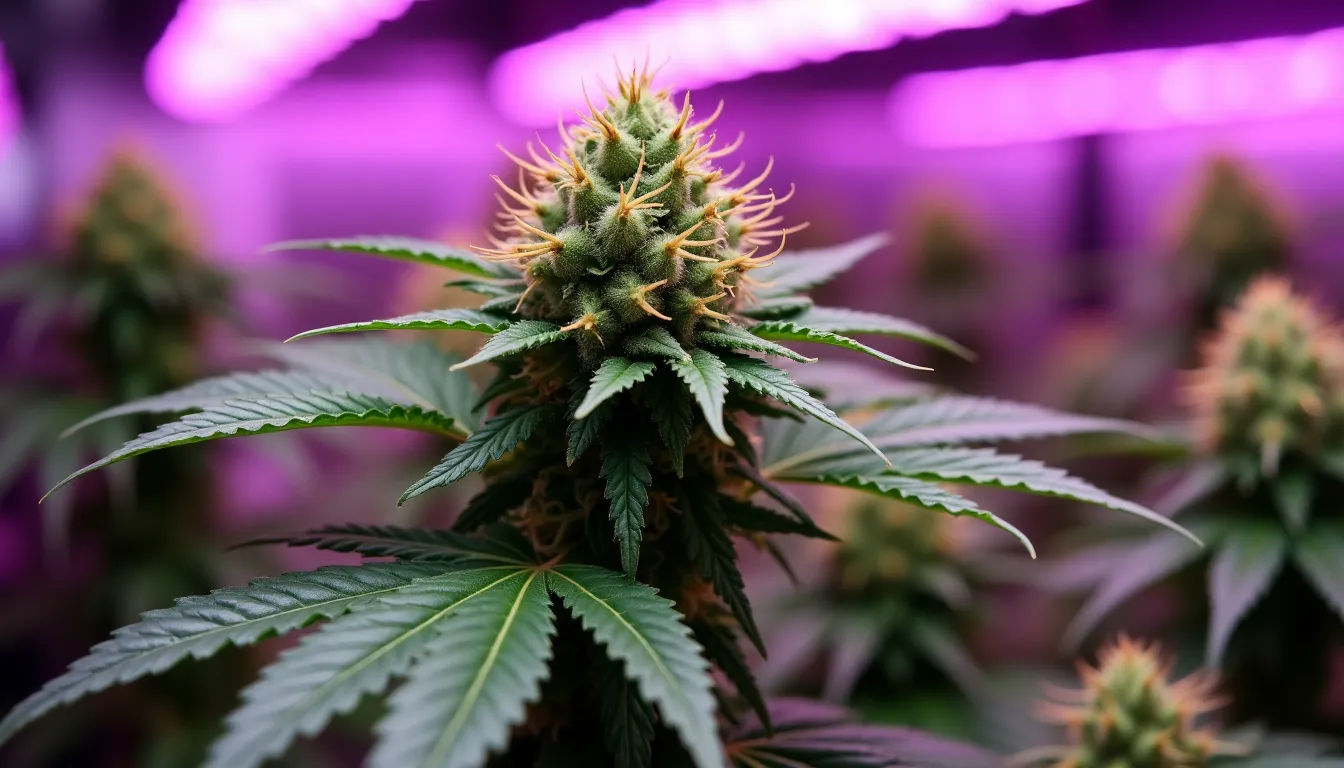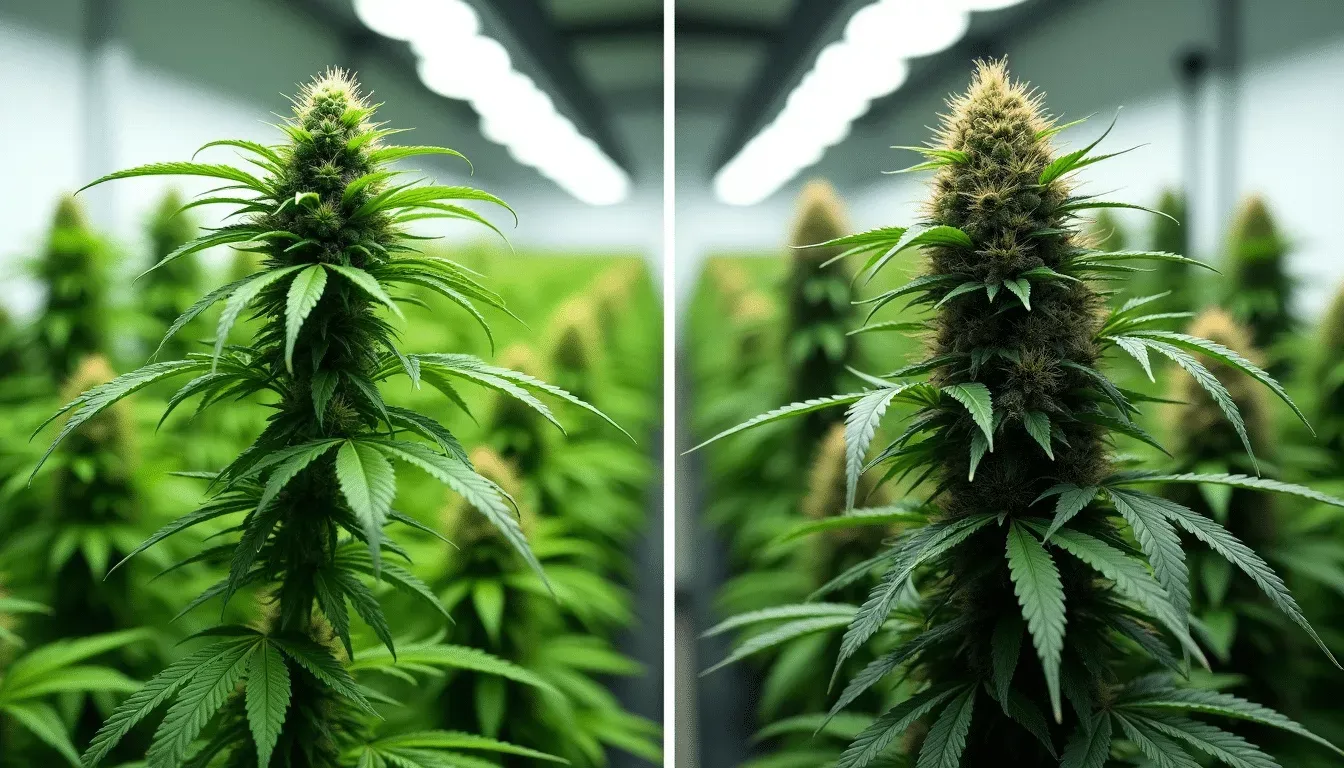Live Resin vs Rosin: Which Gives Better Quality? [2025 Guide]
The world of cannabis concentrates keeps evolving, and two extraction methods stand out above the rest – live resin and rosin. Both start with flash-frozen cannabis plants, preserving those precious terpenes and cannabinoids right after harvest. That’s where the similarities end.
Live resin needs solvents like butane to pull out the good stuff, while rosin takes a more natural approach with just heat and pressure. I’ve watched both methods gain popularity for different reasons. Live resin gives you that sticky yellow-brown concentrate with slightly higher THC levels – perfect for dabbing, whether as budder, crumble, or shatter.
Here’s what caught my attention: rosin’s following has exploded among folks who want their concentrates pure and solventless. No chemical extraction means a more refined product that really captures the plant’s essence. The trade-off? Usually a bit less THC, but many users say the cleaner high is worth it.
Picking between these concentrates isn’t just about potency. Some weed aficionados chase those high THC numbers, while others prioritize purity and natural processing. Let me break down everything from how they’re made to what they taste like – that way you’ll know exactly which concentrate matches what you’re after.
What is Live Resin? Understanding Solvent-Based Extraction
Live resin stands out in the concentrate game because of how it’s made. Unlike traditional extracts from dried and cured bud, this stuff starts with fresh-frozen cannabis plants. The result? A concentrate that keeps the plant’s original chemical profile intact.
The flash-freezing process explained
The magic happens right after harvest. Growers flash-freeze fresh cannabis plants at temperatures between -20°F to -40°F. I’ve seen this process firsthand – it’s pretty impressive how quickly they need to work. That “dwell time” between cutting and freezing needs to be minimal to lock in maximum potency and flavor.
Here’s what makes flash-freezing special: it stops those precious terpenes from evaporating like they would during normal drying. Traditional methods lose a bunch of terpenes no matter what you do. But flash-frozen bud? It keeps about 95% of those aromatic compounds. That’s why live resin smells and tastes so much like fresh cannabis.
How solvents extract cannabis compounds
After freezing comes the scientific part. Producers use hydrocarbon solvents – usually butane, propane, or both – in a closed-loop system. These solvents need to be super cold, below -13°F, to pull out the good stuff effectively. The process reminds me of making coffee, except way more complex and with much better temperature control.
Solvent extraction might sound sketchy, but it’s actually pretty efficient. It pulls out cannabinoids and terpenes while leaving behind the plant junk we don’t want. Plus, you get more product this way compared to solventless methods. That’s why it’s popular commercially, even though you need special equipment and serious safety protocols.
Common forms of live resin products
Live resin comes in several tasty forms:
- Live resin sugars: Looks like crystallized honey
- Live resin batters: Smooth and creamy like cake batter
- Vape cartridges: Perfect for stealth sessions
- Dabbable concentrates: Including wax, pull-and-snap, budder, and caviar
Each type keeps that high-terpene profile that weed aficionados chase after. Just remember to store your stuff in airtight containers, preferably in the fridge. Heat, light, and air are your concentrates’ worst enemies.
What is Live Rosin? Exploring Solventless Production
Live rosin sits at the top of the concentrate hierarchy for weed aficionados seeking pure, clean extracts. I’ve watched the solventless movement grow, and there’s good reason – this stuff captures fresh cannabis essence without touching a single chemical solvent.
The ice water extraction method
The process starts just like live resin – with flash-frozen plants. But here’s where it gets interesting. Instead of chemical solvents, producers use nothing but ice water and gentle agitation. The freezing temps make those precious trichomes – tiny resin glands packed with cannabinoids and terpenes – brittle enough to break off the plant material.
Those trichomes are heavier than water, so they sink while the plant stuff floats. Pretty clever, right? The mixture then goes through bubble bags (special mesh filters) with smaller and smaller holes, catching different sizes of trichome heads. After careful drying in a freeze dryer, you’ve got what we call bubble hash or ice water hash.
Heat and pressure techniques
This is where the magic really happens. That bubble hash goes into filter bags between heated rosin press plates. When they apply pressure at temperatures between 160-180°F (71-82°C), those trichomes burst and release their oils.
I’ve seen plenty of attempts go wrong – too much pressure causes “blowouts” where product escapes the filter, while too little pressure wastes good material. When done right though? Pure golden rosin flows out, completely free of solvents or additives.
Why live rosin commands higher prices
Here’s the truth about those premium prices – they’re justified by the craft behind it. The yield is significantly less product than solvent extraction, plus it takes more work, skill, and time. Not every strain works well for this process either, which limits options.
But for concentrate lovers chasing the purest expression of cannabis, nothing beats live rosin. Without chemical solvents mucking things up, you get the plant’s complete terpene profile and natural compounds. Sure, it costs more, but that’s the price of artisanal quality. Think craft beer versus mass-produced lager – both get you there, but the experience hits different.
Quality Indicators: Comparing Terpene Profiles
Terpenes make or break cannabis concentrates. These aromatic compounds don’t just create unique flavors – they shape the entire experience and therapeutic potential of different strains. Let me break down how live resin and rosin handle these crucial components.
Terpene preservation in live resin
Live resin’s flash-freezing technique locks in terpenes like a cryogenic time capsule. When plants hit those -40 degrees Fahrenheit temperatures, their delicate trichomes freeze with all their precious compounds intact. This beats traditional curing methods where terpenes usually evaporate into thin air.
The solvent extraction pulls these preserved compounds from the plant material pretty effectively. Monoterpenes like limonene – that’s what gives you those bright citrus notes – show up in higher quantities compared to other methods. But here’s the catch: some terpenes might change or disappear during processing. It’s like trying to catch smoke – you’ll get most of it, but some always slips away.
How solventless extraction affects flavor
Rosin production takes terpene preservation to another level. Without chemical solvents messing with the mix, every single terpene from the original plant makes it to the final product. The gentle heat and pressure method preserves these aromatic molecules better than any other technique.
Weed aficionados often say rosin tastes purer and more complex than solvent extracts. When done right, that golden oil captures the plant’s living essence – imagine taking a whiff of fresh cannabis right before harvest. That’s what properly pressed hash delivers.
Lab testing and quality verification
Third-party labs keep everyone honest by analyzing up to 44 prominent terpenes. These tests aren’t just measuring stuff randomly – they follow strict protocols with validated methods and proper documentation.
Quality labs don’t mess around. They verify accuracy, precision, and sensitivity while watching for anything that might interfere with results. For concentrate hunters seeking the real deal, certificates of analysis tell the whole story – terpene profiles, potency, residual solvents, and contaminants all laid bare. This data helps you pick the perfect concentrate for your needs.
Potency and Effects: Which Delivers Stronger Results
Let’s talk about what really matters to most concentrate users – potency. Live resin and rosin both pack a serious punch, but they hit different when it comes to chemical makeup and effects.
THC content comparison
Raw numbers first: live resin usually edges out live rosin in THC content. That’s because those solvents are really good at stripping every bit of THC from the plant material. Live rosin typically lands between 70% and 85% THC, while live resin can push even higher thanks to its extraction efficiency. Most live resin products I’ve seen test between 65% and 95% THC, depending on what they started with.
The entourage effect in full-spectrum concentrates
Here’s where it gets interesting – both concentrates keep the plant’s full spectrum of cannabinoids and terpenes intact. This creates what we call the “entourage effect” – all those compounds working together to enhance the benefits. Science backs this up – full-spectrum products hit harder than isolated THC. That’s why both concentrates give you that well-rounded experience instead of just a straight THC blast.
User reports on potency differences
From what I’ve gathered talking to other concentrate enthusiasts, the differences are subtle but noticeable. Live resin’s complex extraction process seems to create a more intense high. But here’s the thing – while live resin might get you higher on paper, plenty of folks don’t find that difference significant enough to write off rosin. Actually, some people prefer rosin specifically because it’s not quite as intense. It really comes down to what you’re after. I know plenty of weed aficionados who choose rosin’s cleaner high over resin’s raw potency.
Quick Comparison: Live Resin vs Rosin
Here’s a breakdown of how these concentrates stack up against each other. I’ve compiled the key differences to help you make an informed choice:
| Feature | Live Resin | Live Rosin |
|---|---|---|
| Starting Material | Flash-frozen cannabis plants (-20°F to -40°F) | Flash-frozen cannabis plants |
| Extraction Method | Solvent-based (butane, propane, or blend) | Solventless (heat and pressure) |
| Production Process | Closed-loop system using hydrocarbon solvents | Ice water extraction followed by heat and pressure application (160-180°F) |
| THC Content | 65-95% | 70-85% |
| Terpene Preservation | Up to 95% of original aromatic compounds | Complete terpene profile preservation |
| Common Forms | Sugars, batters, vape carts, wax, pull-and-snap, budder, caviar | Not specifically mentioned in article |
| Price Point | More affordable, commercially viable | Premium pricing due to artisanal process and lower yields |
| Quality/Purity | Contains residual solvents, slightly higher THC content | No solvents, more natural and refined |
| Color/Consistency | Sticky yellow to brown | Golden oil |
| Yield | Higher yields | Lower yields compared to solvent extraction |
Conclusion
Live resin and rosin represent two paths to top-shelf concentrates, each with its own sweet spot in the market. Live resin pulls ahead with slightly higher THC content thanks to solvent extraction, while rosin wins the purity game with its solventless approach that keeps every terpene intact.
I’ve watched plenty of concentrate enthusiasts wrestle with this choice. Live resin catches attention with its potency-to-price ratio – that efficient extraction process means more bang for your buck. But rosin? That’s for the purists. These weed aficionados gladly pay extra for concentrate made without a drop of chemical solvent.
The numbers tell an interesting story. Both methods lock in those precious compounds from flash-frozen plants like they’re preserving liquid gold. Live resin pushes THC levels between 65-95%, while rosin holds its own at 70-85%. Either way, you’re getting full-spectrum effects that’ll satisfy even veteran users.
Here’s my take: pick based on what matters to you. Chasing maximum THC without breaking the bank? Live resin’s your friend. Want the purest possible dab? Shell out extra for that golden rosin. Just make sure you’re buying from solid producers who test their stuff properly. Quality concentrate is quality concentrate, whether it’s born from solvents or pure pressure.
FAQs
Live resin is a solvent-based extract using hydrocarbons, while live rosin is produced without solvents using only heat and pressure. Live resin typically has slightly higher THC content and is less expensive, whereas live rosin offers a purer flavor profile and is preferred by health-conscious consumers.
Both live resin and live rosin are high-quality concentrates. Live resin excels in preserving terpenes and offers higher THC content, while live rosin is valued for its purity and natural extraction process. The choice depends on individual preferences for potency, flavor, and production methods.
Live rosin is often considered a safer option due to its solventless extraction method, which eliminates the risk of residual solvents. This makes it appealing to health-conscious users. However, both products can be safe when produced by reputable manufacturers following proper safety protocols and quality testing.
Both concentrates offer potent effects due to their high THC content and preserved terpene profiles. Live resin typically delivers a slightly more intense high due to its higher THC levels, while live rosin provides a more balanced experience that some users find more enjoyable and less overwhelming.
Q5. How should live resin and live rosin be stored to maintain their potency?
To preserve potency and quality, both live resin and live rosin should be stored in airtight containers, preferably refrigerated. This helps prevent degradation from exposure to light, heat, and air, which can affect the concentrates’ cannabinoid and terpene content over time.
Share this content:



